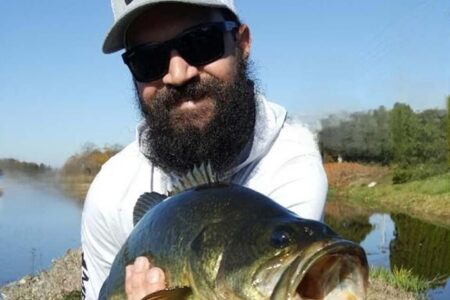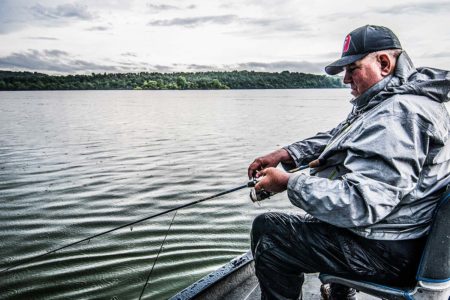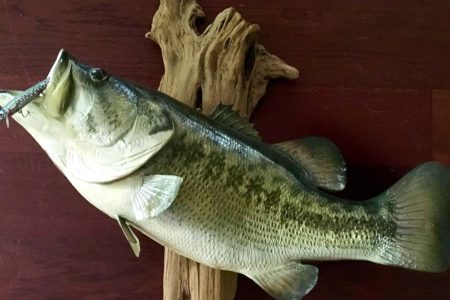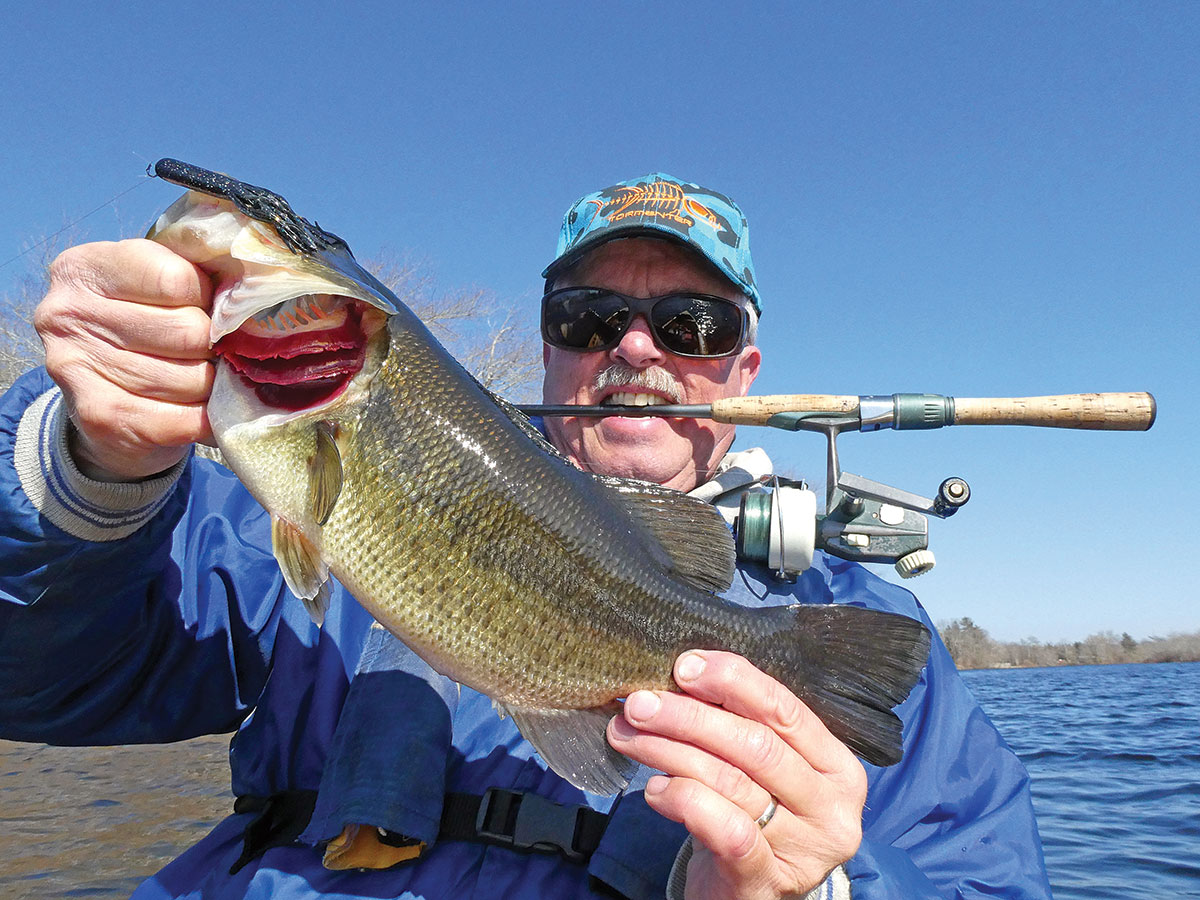
Long Island’s largemouths do not go into hibernation like a big old bear waiting for spring to arrive.
As winter begins to settle in, most of the bass guys I know are clamoring for warmer climes well to our south for bass. Tales of unreal catches from Texas to Florida and as far north as North Carolina always seem to find their way to Facebook, BASS Master and other sources. Then you see the reports coming in from more northern climes of bundled anglers catching large bass through the ice. With all the hype about down south, and with good bass action to our north on the frozen lakes and reservoirs, why wouldn’t a savvy bass angler believe there are still plenty of fish here on Long Island? Well guys, I hate to break it to you, but Long Island’s bass do not go into hibernation like a big old bear waiting for spring to arrive.
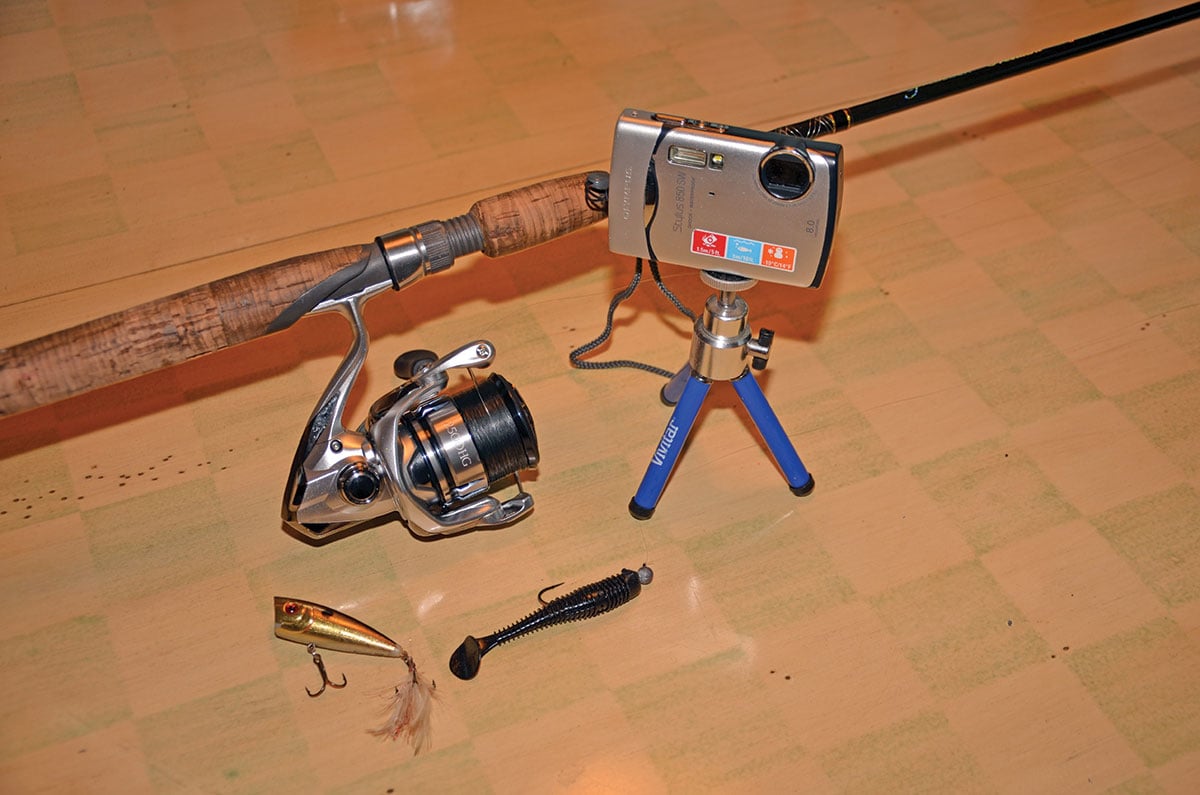
Bass in our waters continue to feed throughout the winter, and in fact, with our warmer than normal temperatures the last several years, they feed more often, and at times can be even as aggressive as they are in the spring and fall months. I have seen baitfish active in the local lakes all winter long the last few years, and this makes for an easy meal for the resident bass. And while they can be aggressive, for the most part they will be lazy, lethargic feeders during the winter months. This is in part due to them fattening themselves up for the winter during the fall period, which diminishes the frequency of their feeding during the winter months.
Small and Slow
I reached out to two veteran Long Island anglers Jim Johnson of Last Cast Customs and my buddy Rick Holmberg for their input on largemouths in the winter. Jim said, “Winter bass fishing can be phenomenal if it’s approached right. If you have open water then it all comes down to water temp. The colder it is the slower you go. Fish the warmest part of the day, which is usually in the afternoon.”
Jim prefers three different techniques that allow him to effectively fish different water temps. The three include a drop shot rig, jerkbait, and soft swimbaits on a 1/8-ounce jig head. “The drop shot will work at all temps but when that water is really cold it allows you to really slow down and keep the bait in the zone a lot longer. When the water gets into the high 30s it is suspending jerkbait time. Slow intermittent jerks with long pauses some as long as a minute is the best approach. And finally the soft swimbait. This is pretty versatile. It’s easy to fish slowly and can be jigged, swam, twitched and even glided,” according to Jim.
My buddy Rick, who runs the ABA Bass circuit in the spring, summer and fall grew up fishing the waters of Long Island his entire life. Rick loves walking the shorelines of our lakes, and continues to fish them throughout the winter months. He feels the sunnier side of the lake is best, but regardless of the air temp, the water temperatures will play a large role. He has had bass when water temperatures were as low as 38 degrees. The key is going slow, and downsizing your baits. Hair jigs and small Keitech swimbaits are his go-to baits when it is cold.
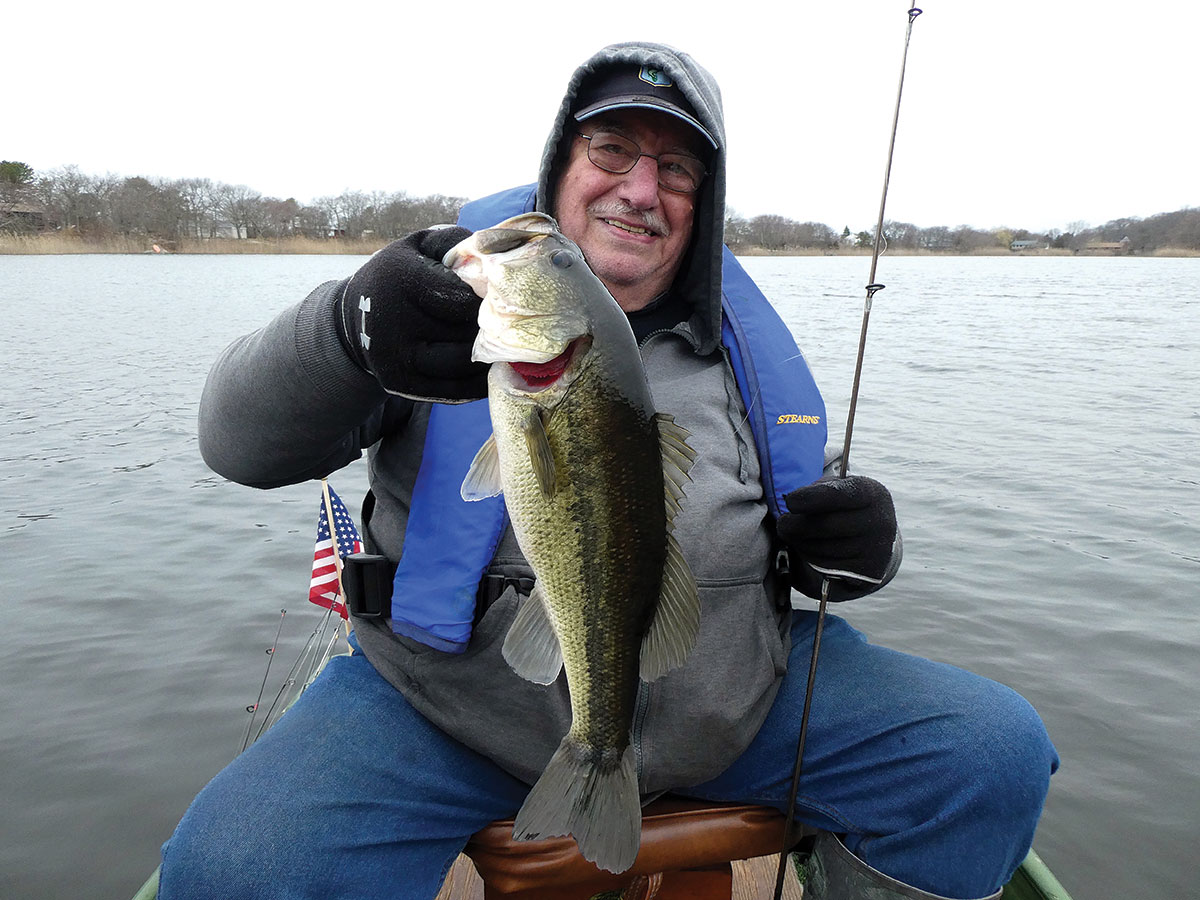
From my own experiences, I like any day that follows a cold snap, especially if the sun is out. Bass will immediately feel the warmth of the sun and come out of their winter holding spots and search a bit for an easy meal. The best time and area to fish will be the early afternoon on the side of the lake where the sun has had time to warm the water a few degrees. The sun warming the water will also get baitfish active and moving. The bass will be shallow so fishing from the shore needs to be a combat operation where a stealthy approach will be needed as to not spook any bass prowling the shoreline.
For baits, artificials are my preferred method, but nothing beats a live shiner if you can get them. Keep in mind that during the winter months, it is catch and release only, so if you employ live bait, please use a circle hook to avoid deeply hooked fish. Some lakes on Long Island are catch and release year round, including all of those in Nassau County. On the artificial end, small Rapala swimmers, Keitech 2.8, 3.3 or 3.8 Fat Swim Impacts on a light 1/16- to 1/8-ounce jig head or tubes are my preferred choices. On those real sunny days, small poppers are killers. For the small poppers, patience and cadence are needed. You must make the cast, allow the rings from the popper landing to disappear, then make a quick pop. Allow those rings to disappear and repeat.
Tackle
For tackle, you cannot go wrong with a Shimano 2500 Stradic and 6- to 7-foot long rod rated for 4- to 12-pound test. Spool your reel with fluorocarbon line in 4- to 8-pound test, or a mix of braid and fluoro, which is my preference. My reel will have 8- to 10-pound braid with a fluorocarbon leader of 6-pound test tied in with a double uni-knot. The leader will be long – 15 feet at least to allow the knot between the braid and fluoro to get back onto the spool while landing the fish.
Along with tackle, I would also bring along a camera and good quality scale. This way you can get an accurate weight on your bass, snap a quick photo and get it back in the water. I have a small tripod for my camera that I set up when I get to a spot. It’s quick and easy, and with the timer, even if I am alone I can get quality shots.
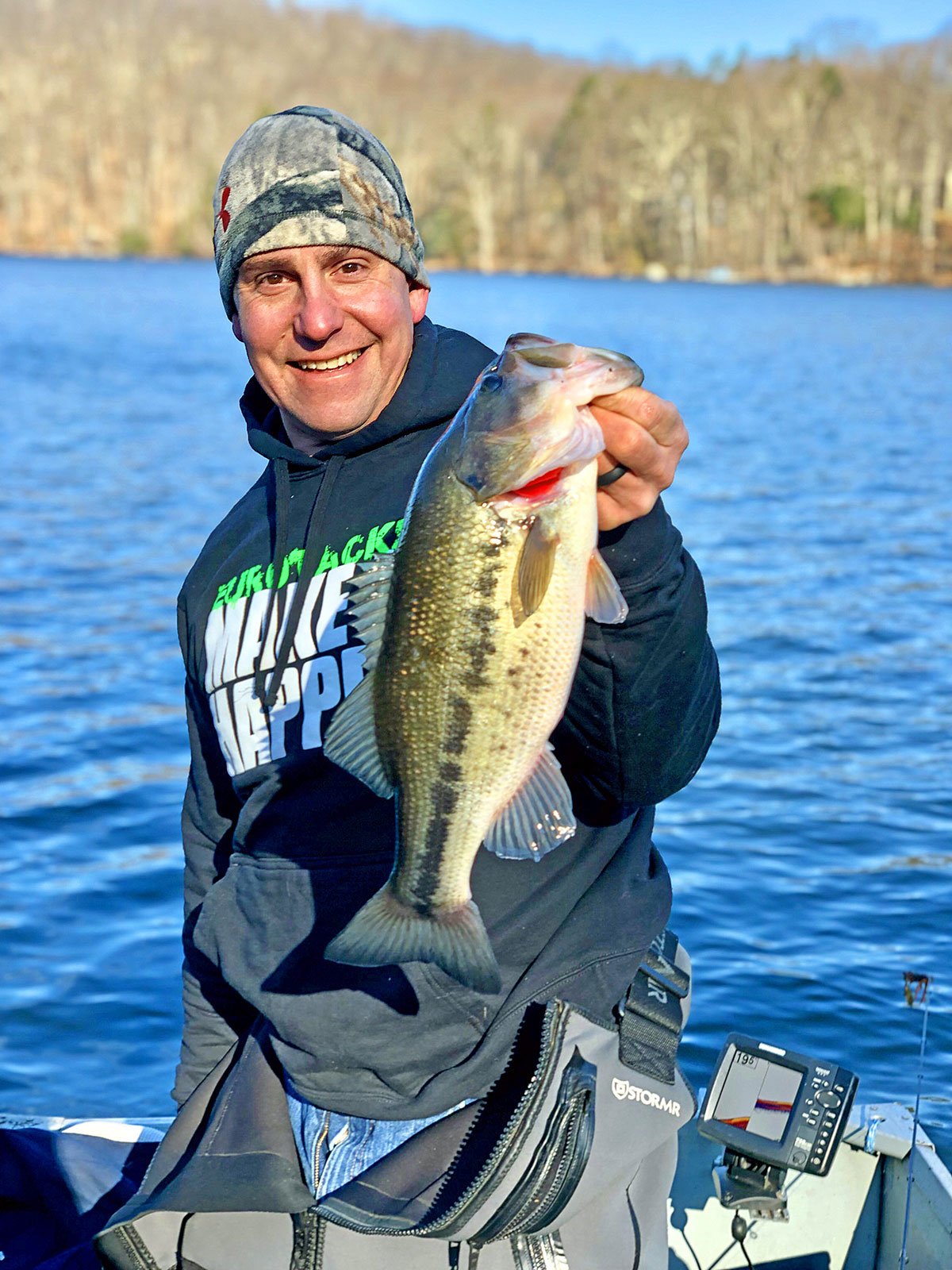
Staying Warm
Oftentimes, anglers overlook the need for warmth when fishing the colder months. It is paramount you dress in layers and keep your hands and toes warm. Once the appendages start getting cold, it is a sure sign your day will be cut short. Wearing old fashioned long johns or today’s new world undergarments will ensure the core stays warm. As for toes and fingers, hand warmers in the shoes will help the toes, while those same had warmers inside gloves will work wonders. A watch cap on the head with some form of windbreaker/foul weather gear will keep the wind chill to a minimum.
Last but certainly the most important piece of gear is a life jacket. In NY, you must wear one in anything under a 21-foot boat after November 1. And, believe it or not, wearing one of the SOSpenders style while on shore is not a bad idea either. One slip from a bank into chilly waters could turn into a dangerous situation.
Where to Find Them
Winter largemouth action can be a ton of fun. Most times you will have the body of water you are fishing to yourself. There are a number of lakes that typically see good bass action throughout the colder months year after year. Fort Pond in Montauk, Patchogue and West lakes in Patchogue, Upper Lake in Yaphank, Massapequa Lake, and Belmont and Hempstead Lake State Parks are all lakes worth exploring. So don’t be a couch potato this winter. Instead, grab some gear and hit your favorite lake – you might be pleasantly surprised.

